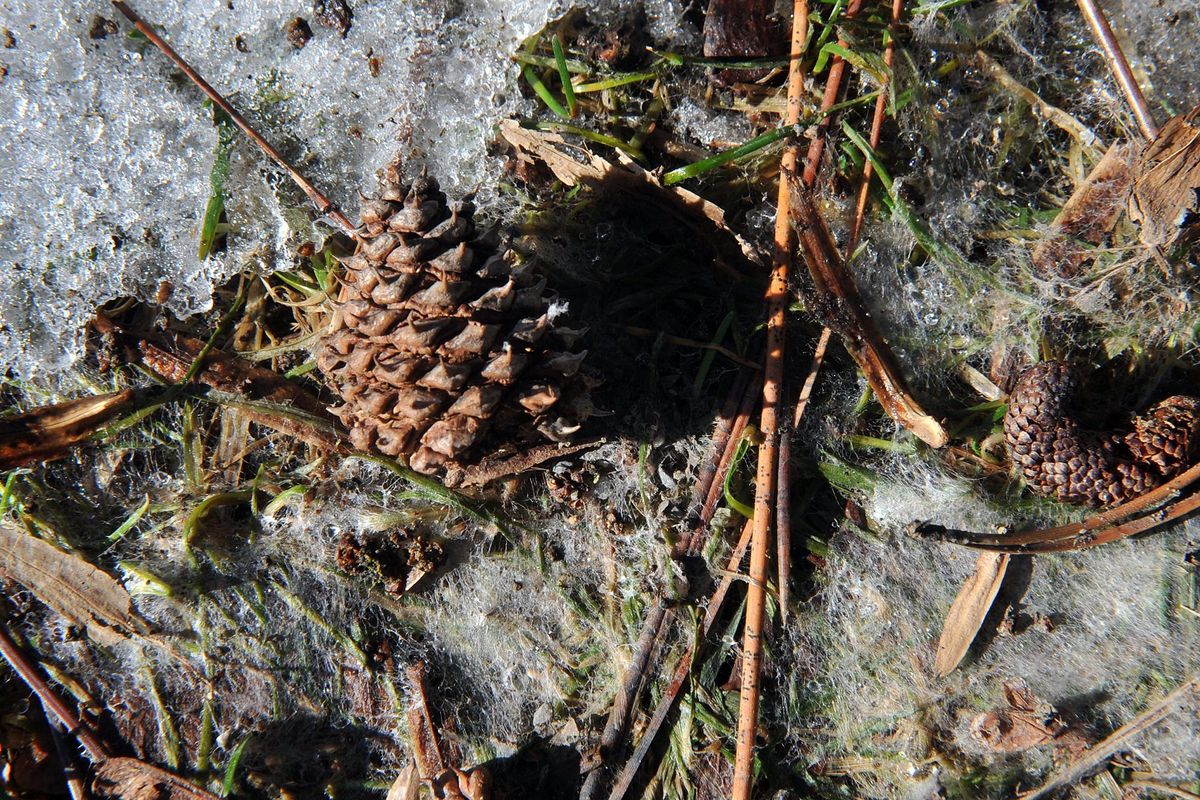Melting snow reveals moldy lawns, golf courses in Spokane

Don’t be alarmed if you spot patches of gray or pink fuzz on your front lawn.
Instead, gardening experts recommend you grab a rake.
Those patches are snow molds caused by fungi that thrive under thick blankets of snow.
Now that most snow in the Spokane area has melted away, experts say the molds appear slightly more prevalent than usual.
“We always tend to get it in the spring,” said Myles Nelson, a supervisor with Senske Services, a local landscaping company.
He suspects snow molds proliferated this winter because December and January saw relatively mild, cool, wet weather, and then February brought significant snowpack to the region.

Homeowners shouldn’t fret about potential damage to their lawns, Nelson said.
“Snow molds are not hazardous, unless you let them linger for a long time,” he said.
There are simple ways to remove the molds and prevent them from growing much in the first place.
Each fall, homeowners should rake any fallen leaves and mow their grass a bit shorter than usual, Nelson said.
“In that last cut, go ahead and cut it down to about 2 inches,” he said.
That prevents blades of grass from clumping together and forming airtight pockets where snow molds can thrive.
A few patches of snow mold might inevitably turn up in the spring. They can easily be broken up with a rake, which also introduces air to the turf and helps dry out the mold.
Nelson doesn’t recommend that homeowners use fungicide to mitigate snow mold. The less chemical treatment, the better, he said.
But golf course managers depend on it.
Mike Greene, the superintendent of Spokane’s Downriver Golf Course, said pink mold has covered swaths of the course where a fungicide wasn’t sprayed last fall. Areas that were treated, however, appear much healthier, he said.
Snow molds are caused by two types of fungi, according to Pat Munts, a gardening expert with Washington State University’s Spokane County Extension and a gardening columnist for the Voice sections in The Spokesman-Review. Gray snow mold, or typhula blight, is caused by Typhula spp. Pink snow mold, or fusarium patch, is caused by Microdochium patch.
They primarily grow on turfgrass but also can affect crops.
Two years ago, farmers in southeastern Washington were surprised to find pink snow mold in their wheat fields. It appeared to be the first time the fungus had been detected on wheat in Walla Walla, Whitman and Columbia counties.
The cold-loving organism is more commonly found in the higher elevations of north-central Washington, where snow covers the ground for 100 days or more, said Tim Murray, a WSU plant pathologist.
Murray said the unusual occurrences of snow mold in 2017, which damaged some small sections of wheat fields, were most likely an anomaly. This year, he said he doesn’t expect the fungus to hurt farmers’ bottom line.